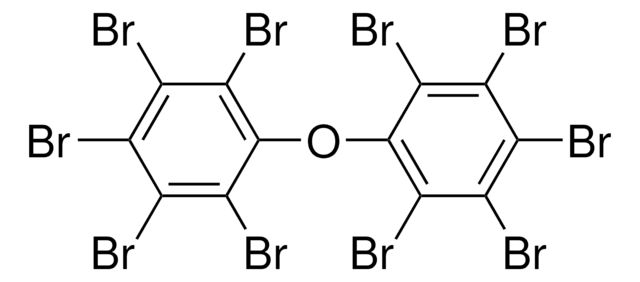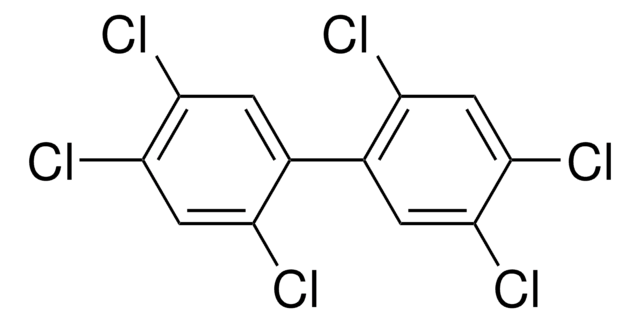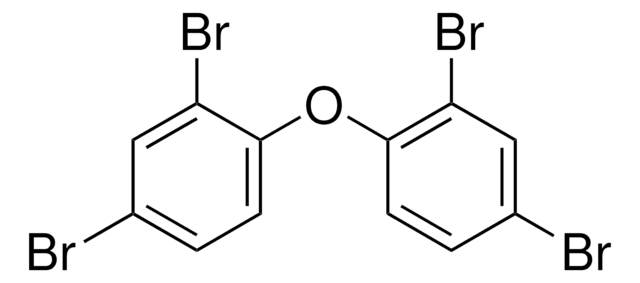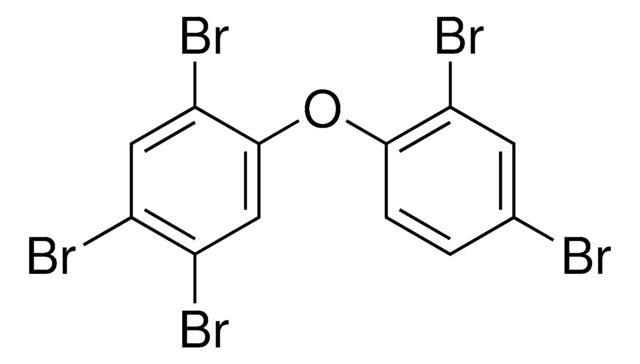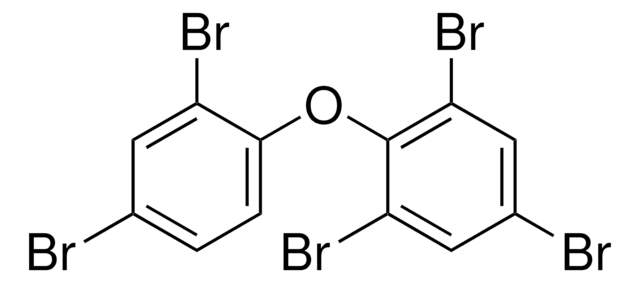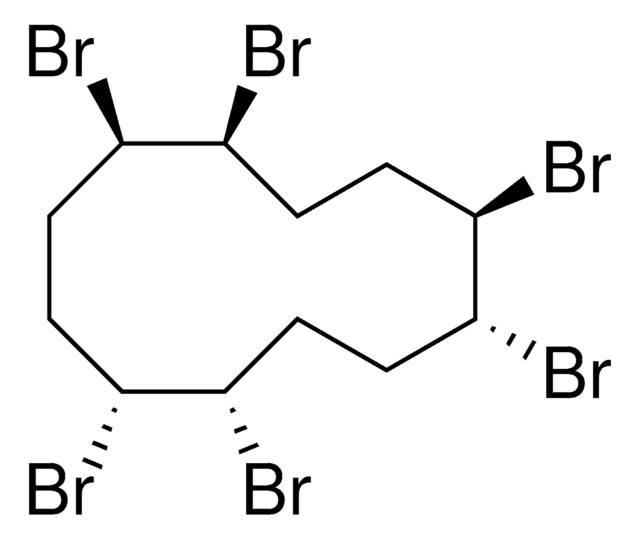91408
BDE No 37
analytical standard
Synonym(s):
3,4,4′-TriBDE, 3,4,4′-Tribromodiphenyl ether
About This Item
Recommended Products
grade
analytical standard
Quality Level
assay
≥98.0% (GC)
shelf life
limited shelf life, expiry date on the label
mp
48-52 °C
format
neat
InChI
1S/C12H7Br3O/c13-8-1-3-9(4-2-8)16-10-5-6-11(14)12(15)7-10/h1-7H
InChI key
YALAYFVVZFORPV-UHFFFAOYSA-N
Recommended products
signalword
Danger
hcodes
Hazard Classifications
Aquatic Acute 1 - Aquatic Chronic 1 - Eye Dam. 1
Storage Class
11 - Combustible Solids
wgk_germany
WGK 3
flash_point_f
Not applicable
flash_point_c
Not applicable
Choose from one of the most recent versions:
Certificates of Analysis (COA)
Don't see the Right Version?
If you require a particular version, you can look up a specific certificate by the Lot or Batch number.
Already Own This Product?
Find documentation for the products that you have recently purchased in the Document Library.
Our team of scientists has experience in all areas of research including Life Science, Material Science, Chemical Synthesis, Chromatography, Analytical and many others.
Contact Technical Service
